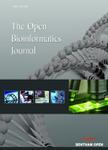版权所有:内蒙古大学图书馆 技术提供:维普资讯• 智图
内蒙古自治区呼和浩特市赛罕区大学西街235号 邮编: 010021

作者机构:Department of Computer Science and Engineering Vidyavardhaka College of Engineering Karnataka Mysuru India Department of Information Technology Manipal Institute of Technology Bengaluru Manipal Academy of Higher Education Manipal India Center for Artificial Intelligence Prince Mohammad Bin Fahd University Khobar Saudi Arabia Department of Computer Science and Engineering Shridevi Institute of Engineering and Technology Karnataka Tumkur India Department of Diagnostic Radiology College of Applied Medical Sciences University of Ha'il Ha'il Saudi Arabia
出 版 物:《Open Bioinformatics Journal》 (Open Bioinformatics J.)
年 卷 期:2023年第16卷
学科分类:0831[工学-生物医学工程(可授工学、理学、医学学位)] 0710[理学-生物学] 1204[管理学-公共管理] 1004[医学-公共卫生与预防医学(可授医学、理学学位)] 07[理学] 09[农学] 0836[工学-生物工程] 0812[工学-计算机科学与技术(可授工学、理学学位)]
主 题:Algorithm Dataset Deficiency Healthcare Naïve baye classifier Nutrition
摘 要:Aims: This study investigates predicting and eliminating malnutrition and anemia using ML Algorithms and comparing all the methods with various malnutrition-based parameters. Background: The health of the nation is more important than the wealth of the nation. Malnutrition and anemia are serious health issues but the least importance is given to eradicate them. Objective: Proper nutrition is an essential component for the survival, growth, and development of infants, children, and women who in turn give birth to infants. Methods: In the proposed system, machine learning approaches are utilized to predict the malnutrition status of children under five years of age and anemia in men and women using old datasets and further providing a suitable diet recommendation to overcome the disease. Classification techniques are being used for malnutrition as well as anemia prediction. Results: Algorithms such as Naïve Bayes classifier (NBC), Decision Tree (DT) algorithm, Random Forest (RF) algorithm, and K-Nearest Neighbor (k-NN) algorithm are utilized for prediction. The results obtained by these algorithms are 94.47%, 85%, 95.49%, and 63.15%. When compared, Naïve Bayes and random forest algorithm provided efficient results for malnutrition and anemia, respectively. Conclusion: By testing and validating, preventive actions can be taken with the help of medical experts and dieticians to reduce malnutrition and anemia conditions among children and elders, respectively. © 2023 The Author(s).